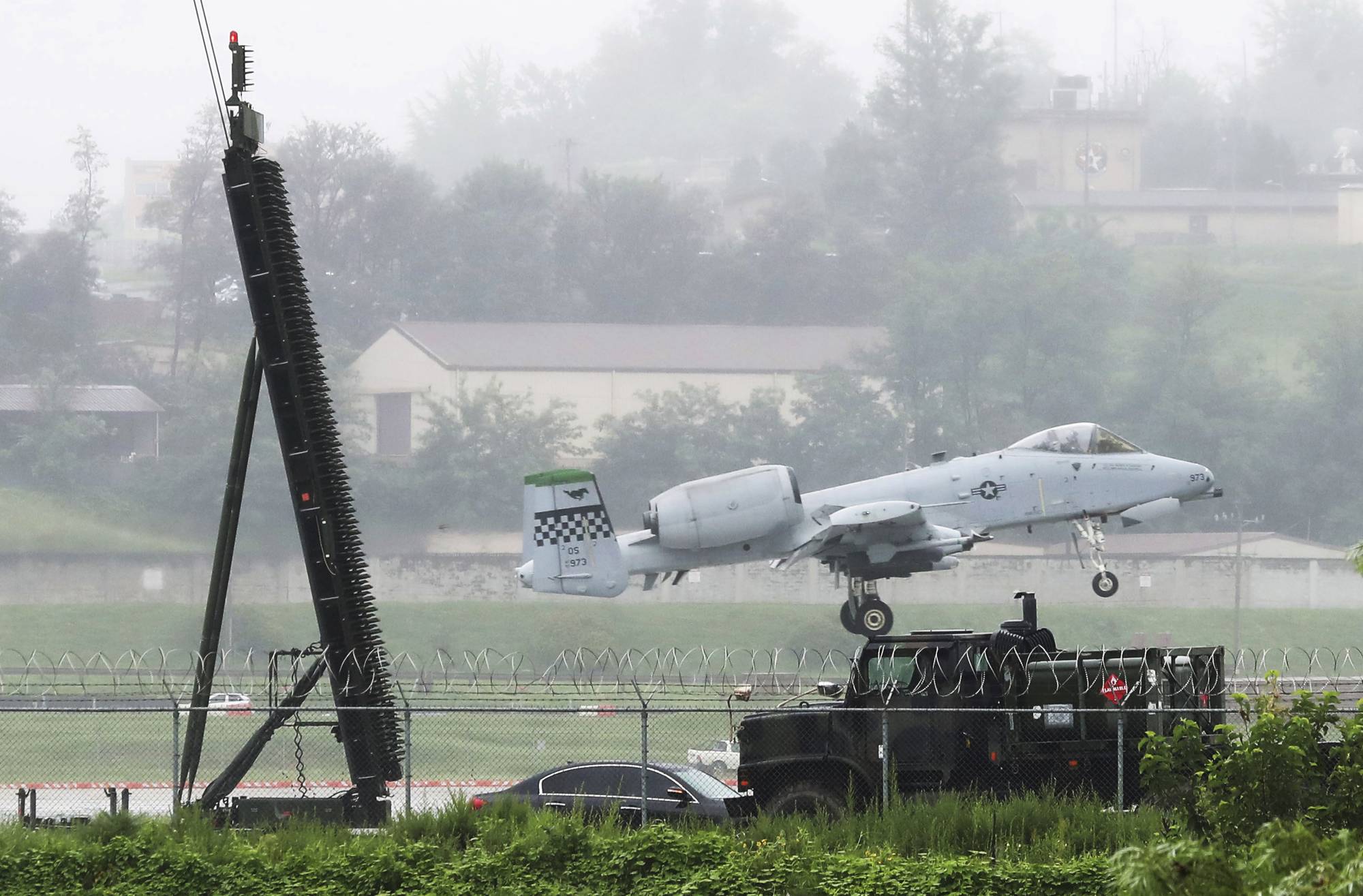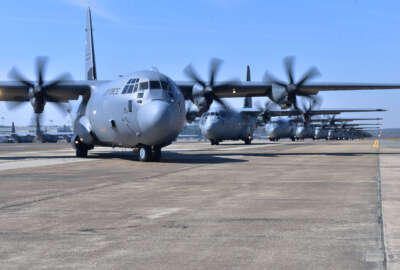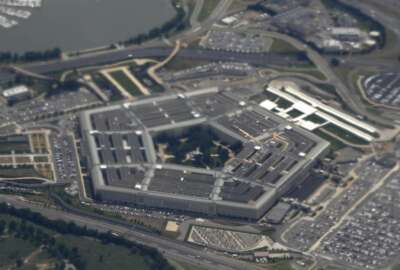Air Force planning restructure for future competition and savings
The service wants to downsize the number of aircraft it uses and focus on modernizing current systems and developing next generation weapons to make its top pri...
The Air Force is proposing a massive restructuring of its platforms to address what it calls the blinking “red light” that it is falling behind China in some areas.
The service wants to downsize the number of aircraft it uses and focus on modernizing current systems and developing next generation weapons to make its top priority near-peer competition.
“I am concerned that tomorrow’s airmen will not have what they need to defend the nation in their time. If we don’t change now, then we are out of time,” Lt. Gen. Clinton Hinote, Air Force deputy chief of staff for strategy, integration and requirements told reporters Monday at the Air Force Association Conference. “It used to be that when we set the wargames five, 10 or 15 years out into the future, that’s when we were having trouble. It was a future problem. What has happened and what has changed over the last two years is that it’s not a future problem – it is a present problem.”
The platform restructure will divest from legacy systems, some of which are close to the hearts of some lawmakers, and put an emphasis on the Air Force’s nuclear capabilities, modernization and technologies like artificial intelligence and machine learning.
The service is suggesting it reduce its number of fighter fleet platforms from seven to four, thereby retiring older systems like the A-10.
The Air Force wants its main four fighters to be a modernized F-22, the F-35, F-15 E and EXs, and reinvented F-16s.
The F-22 will transition to the Next-Generation Air Dominance (NGAD) fighter. NGAD will use the F-22 airframe, but will add better technology and sensors.
The F-16 will also get a revamping from the inside.
Hinote said there are still issues the Air Force needs to work out with the F-35.
“Last week 46 F-35s were grounded for engine or engine-related needs, so parts or fuel systems and/or engines themselves that haven’t been able to make it through depot – that’s not acceptable,” he said. “We can’t keep going like that. That’s lost training, that’s lost readiness for our force. We have got to do better than that. We’re asking both Lockheed Martin and Pratt & Whitney to help on that. We’ve got to fix this together.”
The Air Force will also decrease its bombers from three platforms to two. The service will continue to fly the early-Cold War-era B-52s. Much like the F-22 and the F-16, the Air Force thinks the airframe is still good and modern upgrades can be made.
The second platform will be the new B-21 Raider, which is under development.
The Air Force will retire its KC-135 tankers, because they are getting old and hard to maintain. The KC-10 will keep flying and the service will continue to ready the KC-46.
Hintoe said his current concern with the KC-46 is with the camera and he is currently not comfortable sending it into combat. He said the service has a way forward to fix the issue with Boeing.
Finally, the Air Force is preparing for the huge bow wave coming to a head to modernize nuclear capabilities, which, according to the Congressional Budget Office, will cost the military $1.2 trillion over 30 years.
“It is just the situation that we find ourselves,” Hinote said. “Because we’ve deferred nuclear modernization and conventional monetization for so long, it’s gotten to the point we don’t have any more time to defer either one. A major question that’s going to come up over the next several years is going to be how much of the Air Force’s top line, how much of the Navy’s top line, are we going to devote to recapitalizing the nuclear force?”
The service is stressing the importance of divesting from legacy systems and the need for the savings that will come from that.
“The cost of these legacy aircraft are consuming precious resources,” said Air Force Secretary Frank Kendall.
Hinote said the Air Force would like to divest from its unneeded systems as quickly as possible.
“Divestments are hard, change is hard, we understand that,” he said. “There’s no more time. There’s no more let’s do it next year, or let’s wait on that decision five years from now. The key decisions that have to be made, in order to change the Air Force to be relevant for tomorrow have got to be made today. We can’t make it without the consent of our stakeholders.”
Gen. C.Q. Brown, Air Force chief of staff, said getting out of Afghanistan may help sway lawmakers into getting rid of some older aircraft that were more suited to Middle East warfare.
It is likely that the Defense Department will ask not for more money in the 2023 budget, meaning the services will have to find ways within their budgets to modernize.
Some experts and lawmakers question that the Pentagon’s actual threats and the funding that they require to deter.
“The military threat from China has been much exaggerated,” William Hartung, senior adviser at the Center for International Policy said. “The United States spends about three times on our military than China does, our nuclear stockpile is 13 times as large and we have a more capable Navy.”
He also pointed out that the United States has a more robust alliance system, while China does not.
“The challenge from China is more political and economic and diplomatic, and also there are areas where we have no choice but to cooperate in dealing with climate change, preventing future pandemics and trying to put the world economy on a more balanced basis,” Hartung said. “A lot of this is coming denizens of the military industrial complex and not just from old cold warriors. There was a National Defense Strategy commission mandated by Congress, which has called for a 3-to-5% real increase in Pentagon spending for as far as the eye can see every year. In that commission, more than half of the members work for defense contractors.”
Copyright © 2024 Federal News Network. All rights reserved. This website is not intended for users located within the European Economic Area.
Scott Maucione is a defense reporter for Federal News Network and reports on human capital, workforce and the Defense Department at-large.
Follow @smaucioneWFED






